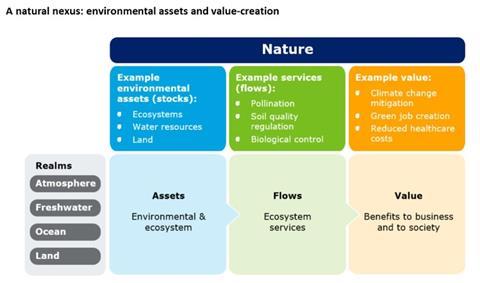The goal of linking verifiable carbon mitigation and nature restoration with a financial return has long been the holy grail for climate-aware investors
As we hurtle towards a 2°C+ global warming scenario, the need to reduce CO2 emissions becomes ever more pressing. Climate change and the natural environment cannot be separated – global warming is both driven by and drives land use change and the degradation of nature and biodiversity.
Yet the structures linking carbon mitigation and nature restoration with a return for investors have long been problematic – and far too often have been divorced from the real lives of the people and communities they affect. Consideration must also be given to how nature-based investment can impact the resilience of rural communities.
A linked issue is that of the quality of some existing carbon mitigation projects. There has been an increase in demand, but supply has not kept pace. This, in turn, means there are now concerns around the credibility of some projects, not to mention the scope for increased ‘delta’ – in terms of both risk and return – between different voluntary carbon markets.
There is now a large supply of voluntary carbon credits that companies can buy for as little as $5 a tonne, but the question is: “Do the buyers understand what these credits represent?”
Often, credits are derived from projects with long lead times – 50, 60, even up to 100 years. This means that at point of sale they are often some way off achieving the CO2 reductions on which they are sold.
Projects are selling a century’s worth of carbon credits in advance of them being ‘useable’ by buyers as carbon offsets, and by doing that they are effectively pricing up to a century’s worth of liabilities and foregoing the ability to generate revenues in the future.
Projects may run out of cash and no longer be maintained. So there could be a mismatch between what’s been promised and what will ultimately be delivered to buyers.
These types of transaction largely define UK and international voluntary carbon markets; they undermine the integrity of these markets and their ability to mitigate climate change, but they also expose carbon offset buyers – and carbon project end-investors – to investment risk.
The danger is a long tail of failed projects which lack funding, competence, or scientific underpinnings, which are unable to deliver either a financial return or, worse, significant CO2 reductions for future generations. We also need to ensure that these projects do not negatively impact local communities and replace biodiverse landscapes with monocultural plantations.
A new approach

So, why is investing in nature in a reputable, constructive way important? According to the WWF, global wildlife populations have declined by 69% in just 50 years, a startingly and deeply troubling statistic.
What’s needed, is a new approach – one led by the science of climate change but also of ecology and biology, and that seeks to work equitably with existing landowners, regional supply chains, and communities.
There is a demand for projects with firm scientific foundations that can deliver integrity, transparency and ongoing assurance over the long-term and – coupled with downside risk protection – an attractive return for investors.
The industry needs to be providing solutions for investors to allocate capital to nature restoration projects, while generating financial returns for institutional investors through the sale of ecosystem services such as carbon credits and biodiversity units.
And it’s not all about trees, we need to invest on a fully diversified basis across the full spectrum of land, river, coastal and marine habitats.
It is best practice to only sell carbon credits once they have been verified. In other words, we believe they should only be sold to investors once the projects to which they are linked are up and running and actually shown to be doing what they have been set up to do.
This doesn’t mean projects can’t be financed from the start, of course – this is an important gap, and bridging finance can play an important role in enabling high quality projects to get off the ground. We need to rethink and rejuvenate the carbon credit market, and the market for nature-based solutions more generally.
Investors should be able to have confidence in the governance and legal framework underpinning impact projects. It’s also about creating transparency, such as in the carbon or biodiversity pricing mechanism.
Ultimately it even comes down to the most basic aspects like land tenure, and access to the land to observe whether what’s been promised is actually delivered. The UK is well placed in this regard, with a solid legal framework governing land use and access claims.
Nature-based investing also needs to ensure that the local communities are bought along in the journey. Not doing so, in our view, presents a risk for investors.
By engaging systematically with local communities, investors can add to local social impacts through investments into both projects and supply chain businesses – including the creation of skilled ‘green’ jobs in so-called ‘left behind’ and rural areas, contributing to growth in the local economy.

Robert Hall is director of earth systems impact investment at Federated Hermes



















No comments yet